Palace of Versailles Tour- Inside Versailles Palace
Purchases made through links earn us a small commission, at no extra cost to you.
The first time I visited the Palace of Versailles, I was in the eleventh grade on my first trip to Europe. I still vividly recall how amazed I was by the decadent furnishings, the sparkling hall of mirrors, the grand fountains, and the symmetry and preciseness of the colourful gardens. After that trip, Versailles was what I pictured whenever I thought of France.
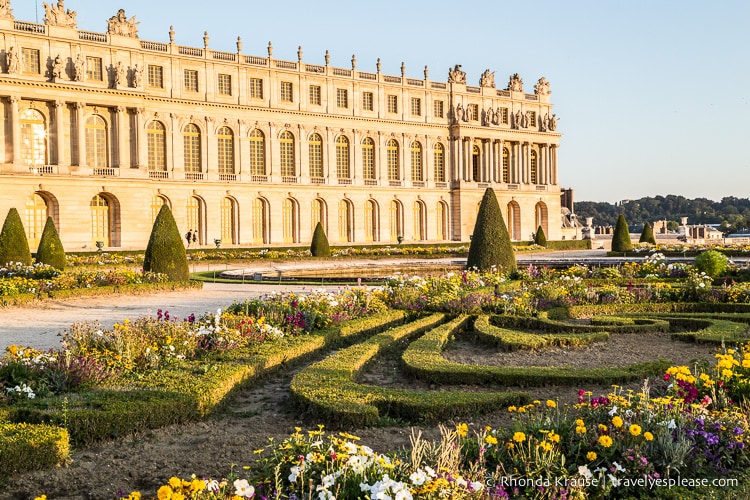

Fast forward 15 years later, and I would be excitedly bringing my new husband along on my second visit to Versailles. Walking up to the palace was just how I remembered it- a large cobblestone courtyard leading up to a resplendent golden gate.
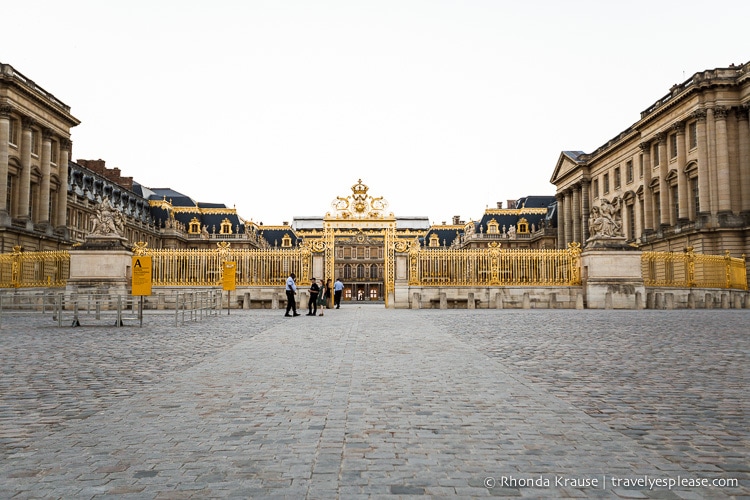

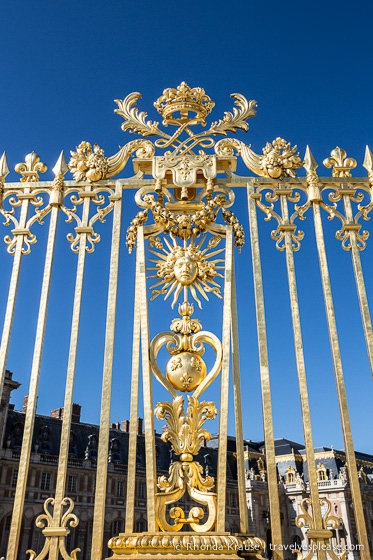
We took our place in the very long lineup where we sweat out a 30 minute wait, the sun blaring down on us at an intense 32 degrees. After finally passing our way through the airport-like security, we quickly got our tickets and entered the palace, excited to begin our self-guided tour inside the Palace of Versailles.

Our Visit to the Palace of Versailles- What It’s Like to Go Inside Versailles Palace
I’m going to start by saying that the inside of Versailles Palace is not the most pleasant of places to visit. It’s crowded. Very crowded. And on hot days, like the one when we visited, the palace gets uncomfortably muggy.
We visited on a Thursday in early September and the crowds were a bit smaller than what I remembered from my first visit. Still, it was virtually impossible to get any good photos during a tour of the Palace of Versailles, especially of the Hall Of Mirrors. In the State Apartments, everyone was eager to land a coveted photo-taking spot in front of the red velvet rope, sometimes even pushing and elbowing others to make this happen. The interior of the Palace of Versailles was definitely the most frustrating place I’ve ever tried to photograph.

If you overlook the crowds, the rooms inside the Palace of Versailles are as regal and lavish as you could imagine. There’s enormous canopied beds, exquisite artwork, marbled walls, and gold in every direction you look. It’s easy to see why the French felt resentful of the privilege enjoyed by the aristocracy, passionately beginning a revolution.
Since learning about the history of the Palace of Versailles is an integral part of visiting Versailles, here’s a brief background about the palace, followed by a look at our self-guided tour of the Palace of Versailles.

History of the Palace of Versailles
It’s hard to believe now, but Versailles first began as a modest hunting lodge.
In 1624, inspired by fond memories of hunting trips to the area, Louis XIII decided to build a small lodge near the country village of Versailles. The building was immediately ridiculed, so the King ordered his architect to undertake reconstruction. A significantly bigger residence emerged, but it was still far from being regal. The architect continued to make modifications, but the lodge remained largely unchanged until the King’s death in 1643. It wasn’t until Louis XIV was named King, that Versailles was transformed into the luxurious palace we know today.
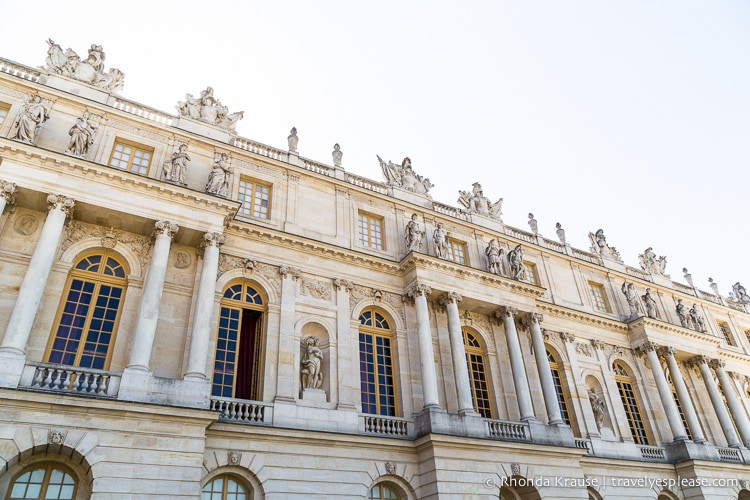
Louis XIV first discovered Versailles in 1641, when his father sent him there to escape the smallpox outbreak in Saint-Germain. He would return years later, as King, to enjoy the hunt the way his father did. Louis XIV started to see that Versailles was a great place to build- plenty of land, removed from the rebellious people of Paris, yet still within the city’s reach.

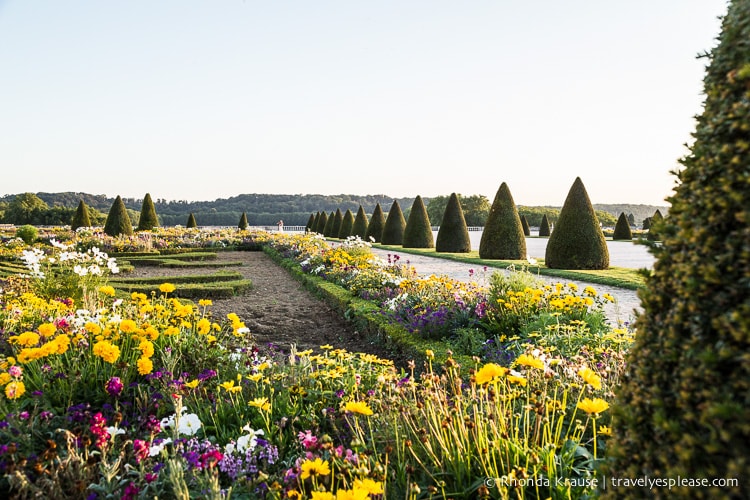
Soon, Louis XIV set out to create an outward sign of his power- a residence bigger and more beautiful than any other, where his court could gather around him. The so-called Sun King spared no expense in creating his vast complex, its decor loaded with symbols of his glory. It took 50 years of building work, and tens of thousands of men, to give the palace its grandeur.
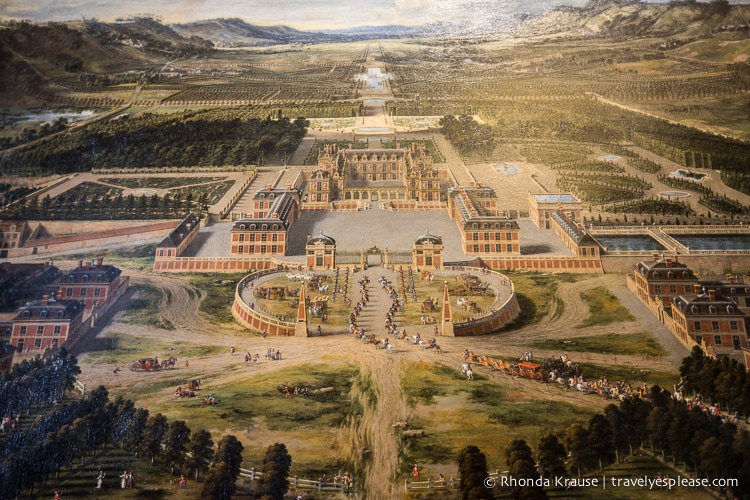
From 1682-1715 and 1722-1789, Versailles was the seat, and symbol, of the absolute monarchy. The Revolution changed all that, emptying the Château of its furnishings but sparing the actual building. For years after the revolution, the palace was neglected. Restorations were initiated by Napoleon I, and then continued by King Louis XVIII and Charles X. However, Versailles never again would be the seat of power.
In 1833, King Louis-Philippe decided to turn the Château into a museum, dedicated to “all of France’s glories.” The Museum of the History of France opened in 1837.
Today the Palace of Versailles is on UNESCO’s World Heritage List and is one of France’s most popular tourist attractions.

Inside the Palace of Versailles- Tour of the State Apartments and Grand Gallery
If you purchase the basic ticket, you will have access to the most popular rooms in the Palace of Versailles including the King’s Bedchamber, the King and Queen’s state apartments, and the Hall of Mirrors. An audio guide is included in the price of the ticket and will explain the distinct functions of each of the rooms. Here are some of the rooms we saw on our self-guided tour of the Palace of Versailles.
The Chapel
Tours of the Palace of Versailles begin just outside of the two-story Royal Chapel. The ground floor was where the congregation gathered while the upper level was reserved for the King, Royal Family and important members of the Court. Consecrated in 1710, the chapel was the last building constructed at Versailles under the reign of Louis XIV. Its ceiling paintings illustrate the continuity between the Old and the New Testament.
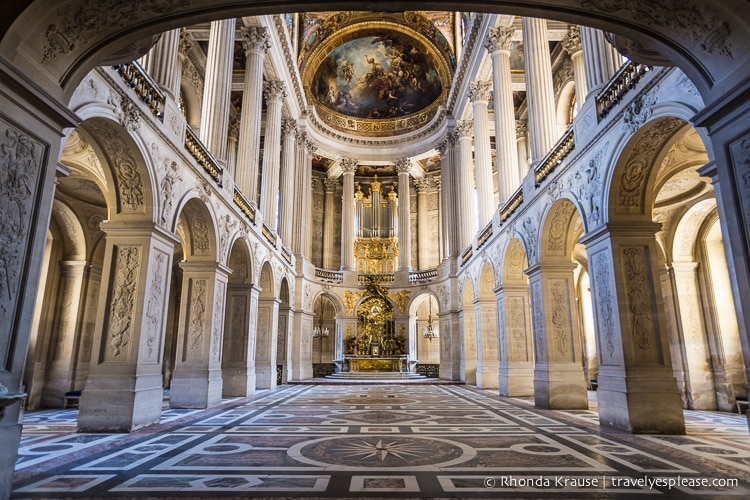
The King’s State Apartment
The State Apartment is a collection of seven rooms, each dedicated to a Roman deity associated with the planets known at the time.
The State Apartment was briefly used as a dwelling for the King before being used as reception rooms during “apartment evenings”, a social gathering put on by Louis XIV for members of the Court.
The Venus Drawing Room
During apartment evenings, the Venus Drawing Room was used for serving light meals, buffet style. The centerpiece of the room is full length statue of Louis XIV, glorified as a Roman Emperor.
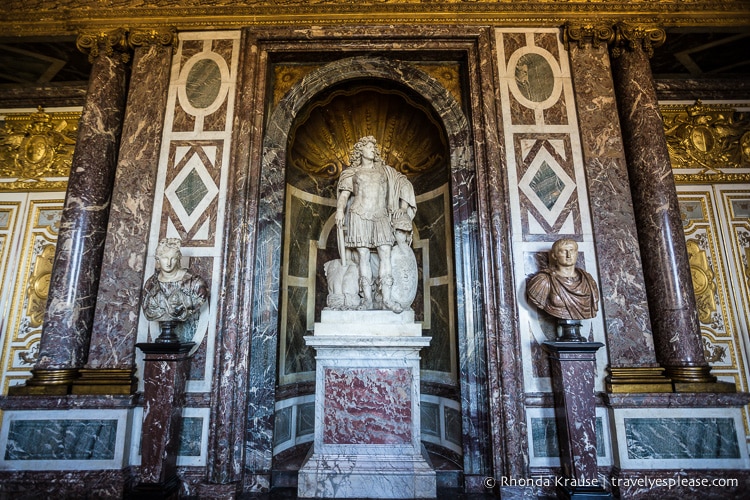
The Diana Drawing Room
This is where Louis XIV would play billiards while the ladies would watch from benches set up on platforms, giving them a good view of the game. When the table was not in use, it was covered by a velvet cloth with gold, fringed edges.
The decor of this room references the legend of the goddess Diana and also features a bust of Louis XIV.
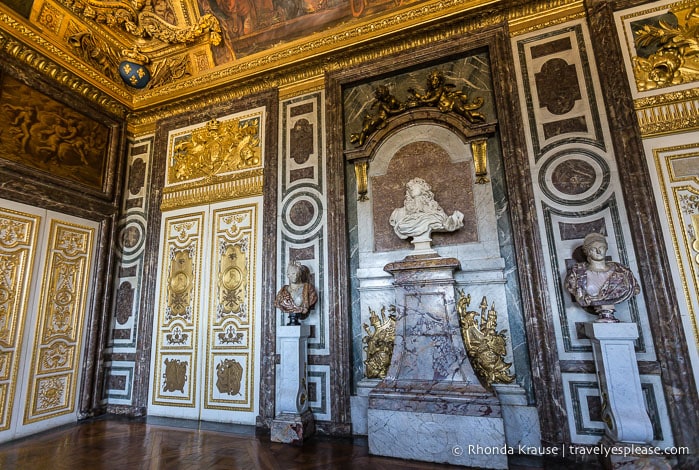
The Mars Drawing Room
This room was initially used as a guardroom, which explains the helmets and trophies decorating the cornice. After 1682, it was used for concerts on apartment evenings.
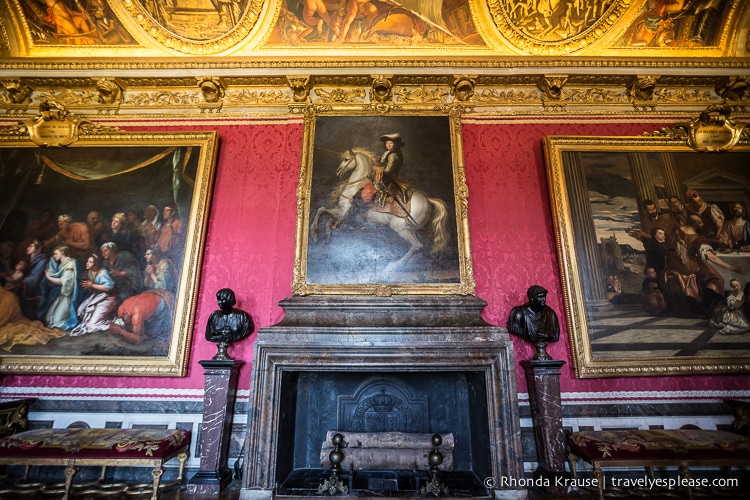
The Mercury Drawing Room
The Mercury Room, along with the Apollo Room, were the most luxurious in the Palace of Versailles. This room was used as the State Bedchamber and the palace’s famous silver furniture was kept here.
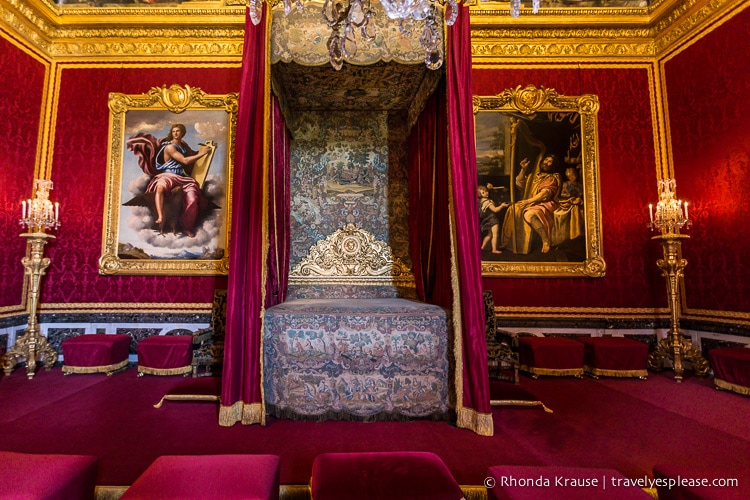
Next to the bed is a painting of David playing the harp, one of Louis XIV’s favourite paintings.
The automaton clock was placed here in the mid-18th century and was a gift for Louis XIV from clock-maker Antoine Morand.
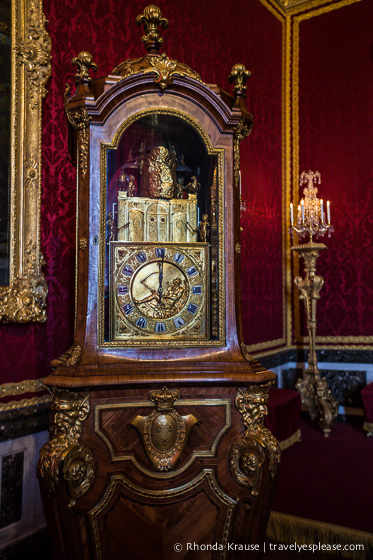
The Grand Gallery
The War Drawing Room, the Hall of Mirrors and the Peace Drawing Room make up the Grand Gallery. Each of these rooms is dedicated to the military victories and political successes of Louis XIV.
The War Drawing Room
This room pays homage to Louis XIV’s victories during the war with Holland and the Peace of Nijmegen which ended the war in 1678. The room hosts a large medallion showing Louis XIV on horseback during the French troops’ crossing of the Rhine on June 12, 1672.
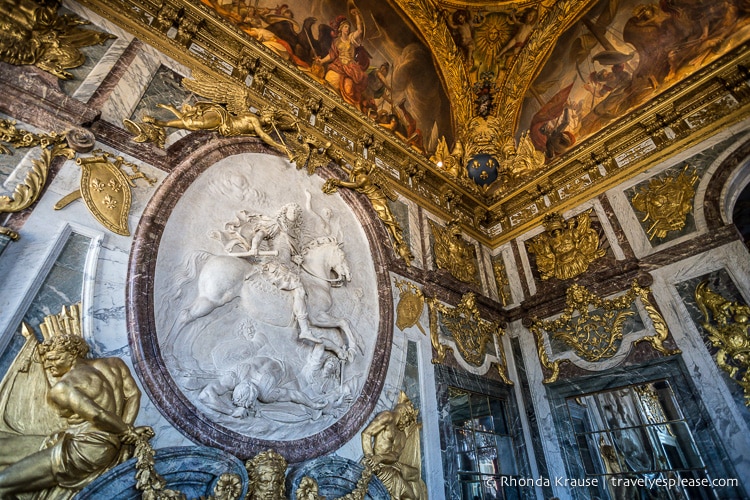
The Hall of Mirrors
The Hall of Mirrors functioned as a passageway to the King’s Apartment. Courtiers would gather here hoping to see the King on his way to the chapel. Grand celebrations and balls were also held here. The 24 chandeliers were not always on display- they were hung only during evening celebrations.

This is the most famous room at Versailles and therefore the most crowded. Good luck getting a good picture! I honestly wasn’t as impressed as I was on my first visit. I much preferred the similar, but more beautiful, Grand Foyer at Palais Garnier in Paris.

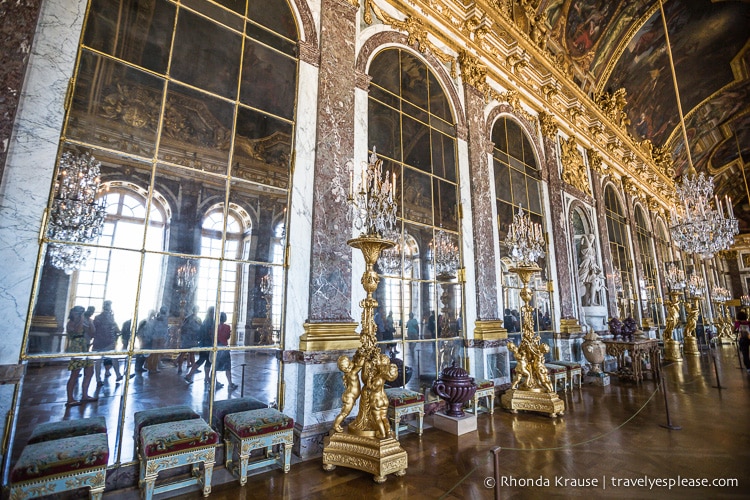
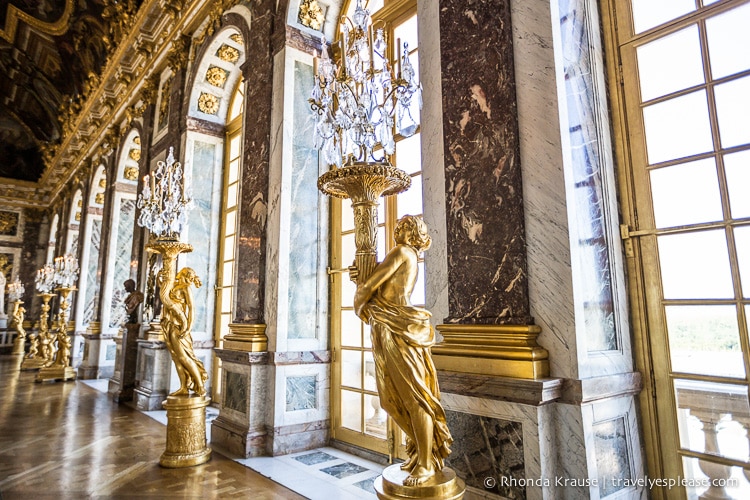
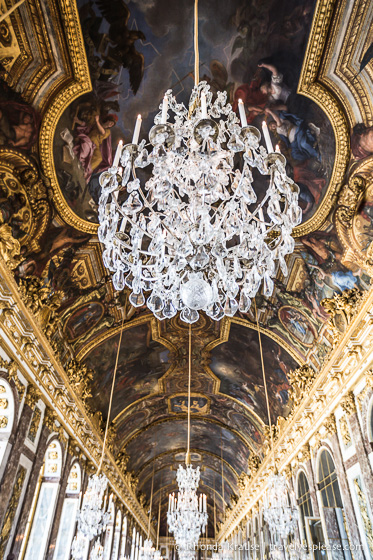
The Peace Drawing Room
The decor of this room is dedicated to the peace which followed the wars represented in the War Drawing Room and the Hall of Mirrors. Above the fireplace is a painting of Louis XV offering Europe an olive branch.

The King’s Apartment
The King’s Apartment includes The Guardroom and Antechambers, The King’s Bedchamber and The Council Chamber. These rooms used to be the Queen’s interior apartments, but after her death Louis XIV turned them into his apartment.
The King’s Bedchamber
This room was originally the State Drawing Room, but after the death of Queen Maria-Theresa, it became part of the King’s apartment. In 1701, Louis XIV turned it into his bedchamber. It would be here that the King would die on September 1, 1715.

The Queen’s State Apartment
There are a lot of similarities between the Queen’s Apartment and the King’s Apartment. Both had the same number of rooms and these rooms were dedicated to the same deities. The only difference was in the ceiling paintings- the Queen’s portrayed female figures and the King’s portrayed male.
The Queen’s Bedchamber
This is where the Queen gave birth to the heirs to the throne. The births were a public event and crowds of spectators rushed into her room after the announcement was made that she was in labour. How awkward!
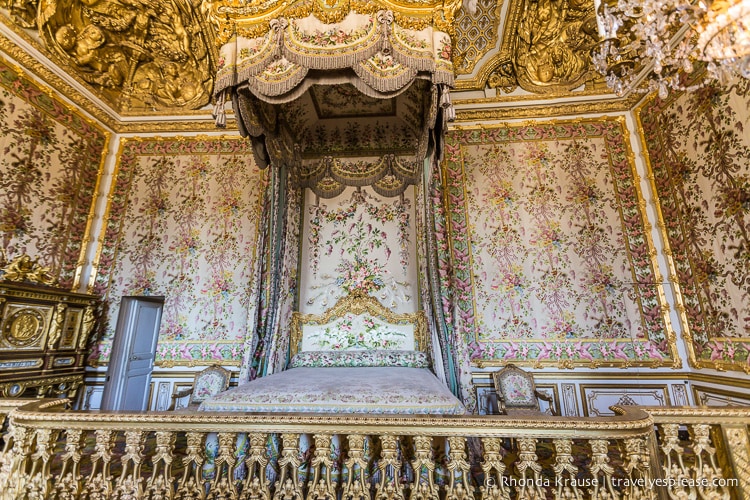

The Antechamber of the Grand Couvert
It was required that the King and Queen eat certain meals in public and this is the room they would do that. It’s also where visitors of the Queen would have to wait before entering the Peers’ Salon or the Bedchamber.
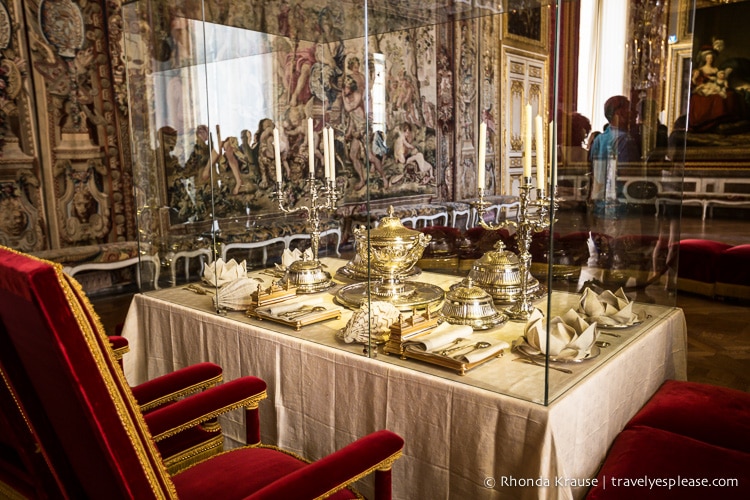

The History Galleries
After the Queen’s State Apartment you’ll arrive at the History Galleries created under the reign of Louis-Philippe. Here are some paintings from the Coronation Room and the Hall of Battles.


Final Thoughts About Our Palace of Versailles Tour
Our tour of the Palace of Versailles showed us just how over-the-top luxurious the lives of French royalty was before the revolution.
As beautiful as the palace is, it was not the highlight of our visit. We absolutely loved exploring the gardens, the Orangerie, and the far end of the estate where Marie Antoinette’s hamlet and the Trianon Palaces are. We spent so much time enjoying the calm and peacefulness of this part of Versailles that we almost missed the last train back to Paris!
There is so much history and beauty to enjoy at Versailles, that we had to break this post up into three parts. Now that we’ve taken you on a tour inside Château de Versailles, in Part Two we’ll visit the Trianon Palaces and in Part Three we explore the Queen’s Hamlet, my personal favourite!
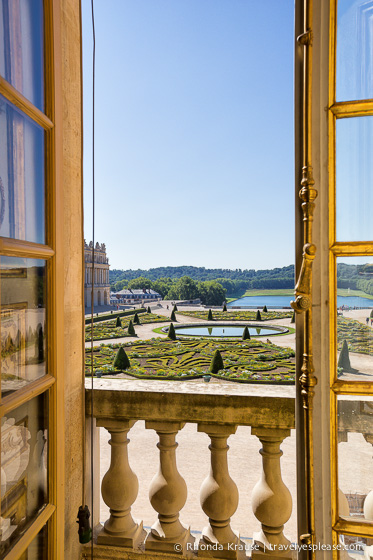
Tips for Visiting the Palace of Versailles
Admission: There are several different admission tickets to the Palace of Versailles. The Palace ticket lets you tour the palace and grounds/gardens. The Passport gives you admission to the whole estate of Versailles including the main palace, gardens, Trianon Palaces, and the Queen’s Hamlet. The musical fountain show (April-October) is also included in the Passport. All visitors must book a time slot for their visit when buying a ticket.
- An audio guide in twelve languages is available for an extra fee and must be reserved in advance here. Alternatively, an audioguide is available on the palace’s free mobile app.
- Entrance is free on the first Sunday of every month from November to March. You still must book a time slot for your visit.
- The Paris Museum Pass includes access to all unguided tours, the Trianon palaces and the Queen’s Hamlet.
Buying Tickets: We recommend buying tickets to the Palace of Versailles in advance and on-line. This way you only have to endure the outrageous security lineup and not the long ticket lineup. Here are some trusted links where you can buy digital tickets and have them immediately delivered to your smartphone (no need to print):
- Palace of Versailles- Passport (access to all areas, including the Trianons and Queen’s Hamlet)
- Palace of Versailles- Palace Entrance (main palace only)
- Trianon Palaces and Queen’s Hamlet
Guided Tours and Day Trips: Here is a trusted site where you can book a variety of day trips and guided tours of the Palace of Versailles.
Best Time to Visit the Palace of Versailles: The palace is especially crowded on weekends and Tuesdays from 10:00 am- 3:00 pm. Try visiting the gardens first and the palace after 3 o’clock.
Hours of Operation: The palaces and Queen’s Hamlet are closed on Mondays. High season hours apply from April 1 to October 31. Opening hours are as follows and can be confirmed here:
- The Palace of Versailles is open from 9:00 am to 5:30 pm in low season and 9:00 am to 6:30 pm in high season.
- The Trianon palaces and Marie-Antoinette’s hamlet are open from 12:00 pm to 5:30 pm in low season and 12:00 pm to 6:30 pm in high season.
- The French gardens are open every day from 8:00 am to 6:00 pm in low season and 8:00 am to 8:30 pm in high season.
- The park is open every day from 8:00 am to 6:00 pm in low season and 7:00 am to 8:30 pm in high season.
Amenities: There is a restaurant and a cafe in the palace, but they are also very busy.
Getting There: Versailles is easily reached by train from Paris. Take the RER line C5 to Versailles Rive Gauche (the end of the line). It’s about a 30 minute ride and then a short 5 minute walk to the palace.
Information was updated January 2025, but can change without notice. Please confirm directly with the venue.
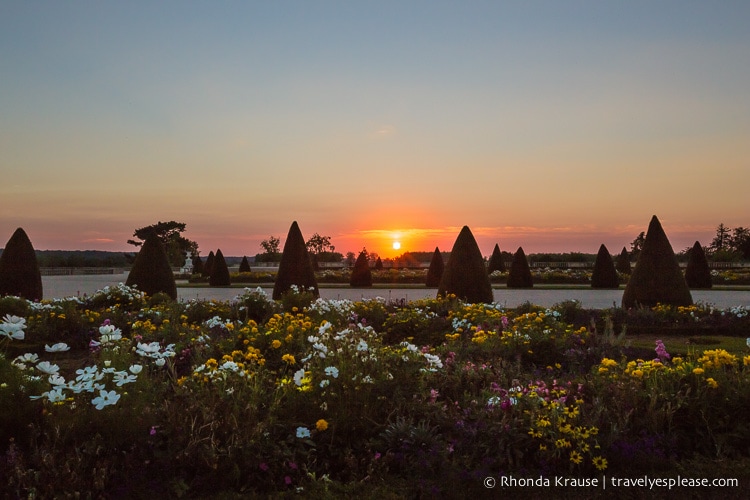
Accommodations in Versailles
For your convenience, here is a list of hotels in Versailles. Please consider booking your Versailles accommodations through the included link. It costs nothing extra and helps support this website. Thank you!
More France Destinations and Travel Guides
- How to Spend 4 Days in Paris- Our Itinerary
- Where to Stay in Paris- A Guide to the Best Paris Neighbourhoods for Travellers
- One Day in Strasbourg- Charm, Romance and an Incredibly Tall Cathedral
- Strasbourg’s Astronomical Clock
